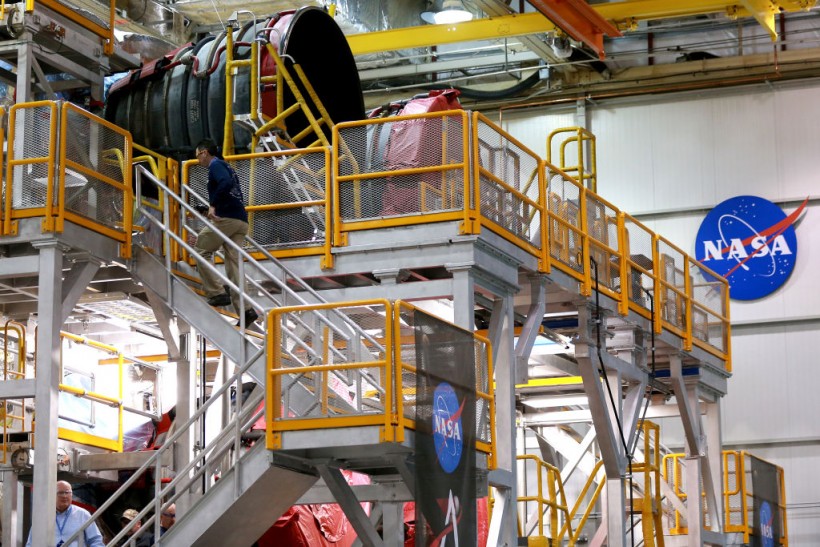The National Aeronautics and Space Administration recently announced it has already fixed the problem with its new rocket set for launch in March 2022.
According to a BBC News report, the space agency has specifically fixed the malfunctioning equipment "on a new rocket" developed to take astronauts to the Moon.
NASA also said it has been readying its giant Space Launch System or SLS for its initial flight set early this year. In December, the agency was able to identify a malfunction with an onboard engine controller.
Nonetheless, the company has now been replaced and all the engine controllers functioned efficiently in last week's tests.
ALSO READ: International Space Station's First Plant Transplant Aided by Microgravity

A view of the Space Launch System (SLS) complete core stage for Artemis 1 Moon mission during Artemis Day at the NASA Michoud Assembly Facility on December 09, 2019 in New Orleans, Louisiana. Artemis 1 is the first in a series of complex missions that will enable human exploration to the Moon and Mars.
The 'Brains' of the Engines
This report describes the controllers as acting as the "brains" of each of the powerful RS-25 engines, helping proper the Space Launch System to orbit, communicating with the rocket to provide accurate control of the engine, not to mention diagnose any conflicts.
At the end of 2021, some electronics on the controller for the fourth engine failed to consistently power up while the test was going on.
However, last week, all controllers were powered up. More so, they functioned as anticipated while engineers put them through their paces in additional testing.
The new rocket is stored at NASA's Kennedy Space Center, in Florida, specifically at the Vehicle Assembly Building or VAB.
When the spacecraft, Orion is stacked on top, the entire system stands 322 feet high, which is taller than the Statue of Liberty.
Preparing for the Artemis-1 Mission
This version of the SLS will produce a gigantic 8.8 million pounds of thrust. Meaning, it's 15 percent more than NASA'S powerful Saturn V launcher that launched people to the Moon during the 1960s and 1970s decades.
The SLS is currently being prepared for a mission known as the "Artemis-1," which will see the rocket launch the Orion spacecraft of NASA towards the Moon. This particular mission is intended to test both SLS and Orion systems ahead of the initial crewed launch set for 2024.
The conclusion of testing for the hardware Artemis-1 is the "wet dress rehearsal," where SLS is rolled out to the launch pad at Kennedy, and loaded with its cold or cryogenic liquid propellants.
Meanwhile, the mission identified as Artemis-3 is set to see the first humans land on the lunar surface since the 1972 Apollo 17 mission. If all goes well, the said mission could launch in 2025.
The crew members who are touching down on the Moon as part of the mission will still be announced although NASA is already training a chosen pool of astronauts to join the flight onboard the Orion spacecraft.
Modern Equivalent of Saturn V
A June 2021 BBC News report described the SLS as the "modern equivalent of the Saturn V," a gigantic launcher constructed during the Apollo period.
Similar to Saturn, it is divided into segments or stages, stacked atop each other. However, the rocket incorporates technology as well, from the space shuttle.
According to this report, the SLS's first version would be called Block 1. It would go through a series of upgrades in the coming years so it could launch heavier payloads to destinations outside the low-Earth orbit.
Essentially, the Block 1 SLS would tower 23 storeys on top of the launch pad, as mentioned, making it taller than the Statue of Liberty, as earlier mentioned.
Related report about NASA's successful test with its SLS rocket is shown on WKMG News 6 ClickOrlando's YouTube video below:
RELATED ARTICLE: Astronomy 2021: Your Guide to The Full Moons, Eclipses, and Meteor Showers This Year!
Check out more news and information on Space in Science Times.














